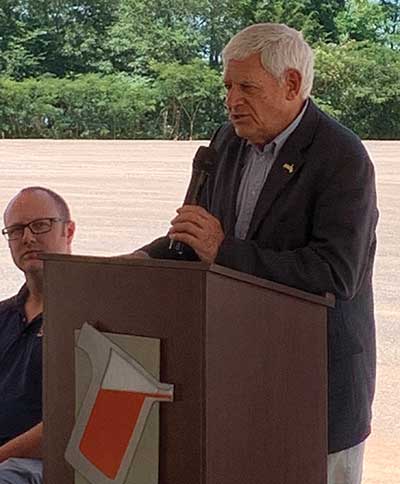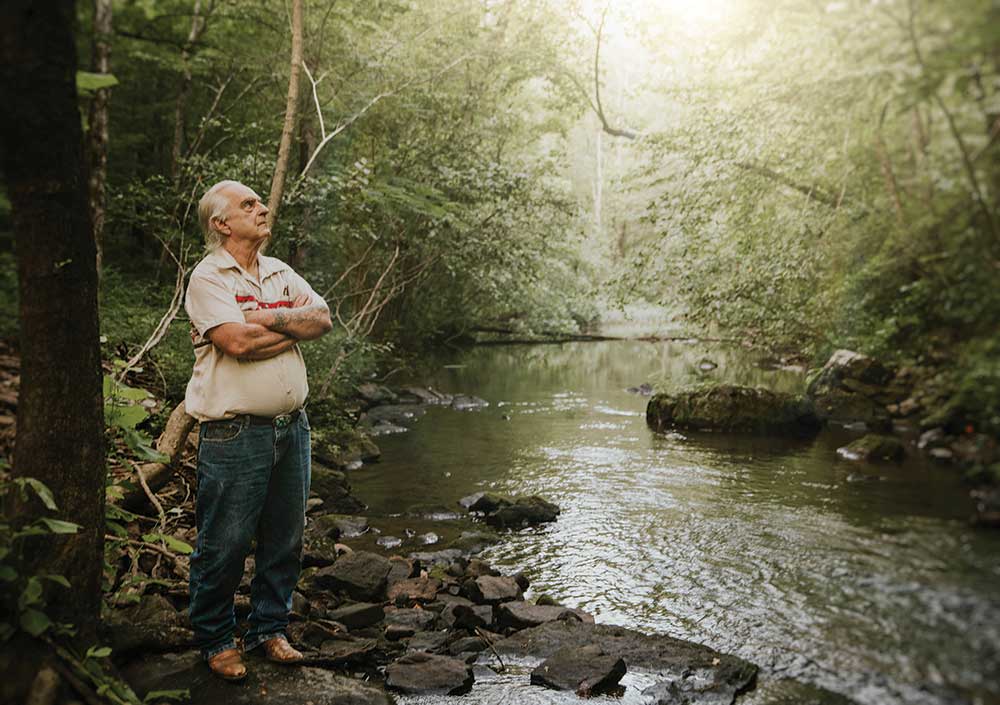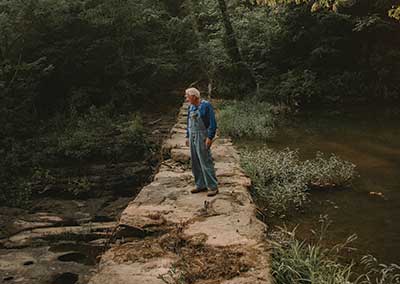Allied Mineral Products breaks ground on $23.5M expansion in Pell City
Allied Mineral Products President and CEO Paul Jamieson didn’t expect to be standing where he was on June 11, addressing a crowd of over 100 people to break ground on a $23.5 million expansion. At least not this soon.
It is the company’s second expansion in five years at the Pell City plant, adding a 200,000 square foot production facility, which will generate 13 new jobs and boost the employment roster to 100.
“Our partnership with Alabama is strengthened yet again with the expansion of this plant which we built in 2019,” said Jamieson. “Our theme for this event is ‘Growth Propels Us.’ This is true for Allied globally, but nowhere more apparent than here in Pell City,” he told the crowd.
“Locating our facility in Alabama was part of a long-term strategy to expand our manufacturing presence in the South to be closer to our customers. Because of the quality of this workforce and the local support here, our growth in Alabama has been faster than we planned,” Jamieson added. “We are excited to be expanding our facility so soon and are confident this will help us to continue that growth.”
“Since its founding over 60 years ago, Allied Mineral Products has grown into a global company, serving multiple industries and registering sales to more than 100 countries,” said Alabama Commerce Secretary Ellen McNair. “With a worldwide presence, the company could have selected another location for this investment, so this expansion in Pell City is truly a testament to the workforce there.”
Jamieson, too, talked of the quality of Allied’s employees, which ensured growth in Alabama quicker than planned. “The global standard is being set right here in Alabama,” he said.
The employee-owned stock company produces a variety of heat containment refractory products used in industrial applications. Construction on the new facility, now under way, will be competed in late 2025. In addition to the new building, the expansion will include installation of new manufacturing equipment including cranes, drying ovens and mixers.
Allied will increase the Pell City facility’s production capacity, improve efficiency, prepare it for growth and increase its ability to serve the company’s Southern region.
Joining Commerce to support the project were the Pell City Industrial Development Board and the Alabama workforce development agency AIDT, which will provide services including skills training on automation technologies for company workers.
“We are happy that Allied Mineral chose its Pell City facility for this new investment. It is always good to see our growth in our industrial base and is a reflection of the quality of the workforce in St. Clair County,” said Stan Batemon, chairman of the St. Clair County Commission. “it validates that we’re doing something right in providing a quality workforce.”
Pell City Mayor Bill Pruitt also cheered the company’s growth plans. “The City of Pell City is proud to see the continued growth and success at Allied Mineral Products,” Pruitt said. “New investment and job growth will stimulate the local economy and highlight the fact that Pell City is a great place for business.”
Besides Pell City, Allied has U.S. locations in Brownsville, Texa,s and Columbus, Ohio, where it is headquartered. The company also has facilities in Canada, South America, Europe, India, China, South Africa and Russia.






















